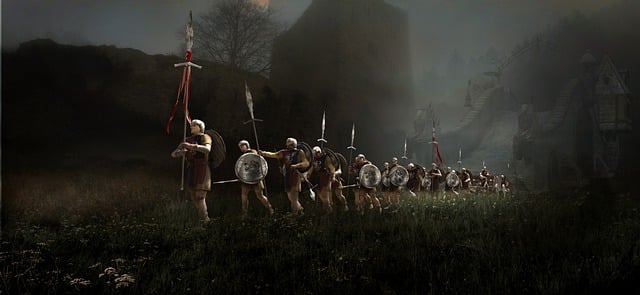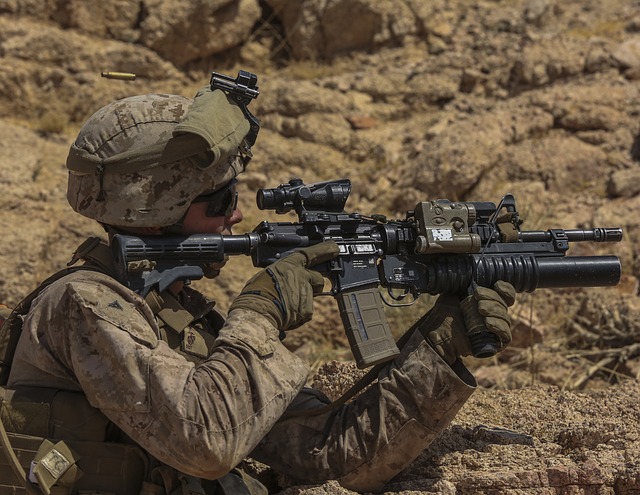
The US Army Rangers Flag holds significant historical, symbolic, and cultural importance, representing the unity, sovereignty, and identity of America. From its roots in ancient civilizations through its prominent role in American conflicts like the American Revolution, War of 1812, and Civil War, to its evolution in the 20th century with more sophisticated designs, the flag has consistently been a rallying point for national pride and military identity. The US Army Rangers Flag, in particular, embodies the bravery and dedication of the elite units it represents, with its olive drab background and Ranger insignia symbolizing their ethos "Rangers Lead The Way." Display protocols for the flag, governed by the Department of Defense, are designed to honor and respect all service members and the nation's symbols, ensuring they are shown in a manner that reflects their significance. As societal norms and political climates evolve, there is a need to carefully reevaluate these display protocols while balancing historical reverence with contemporary values, ensuring the flag remains a relevant and unifying symbol for a diverse society. This section emphasizes the importance of respecting and adapting the display of the US Army Rangers Flag to reflect both its storied past and its place in modern American life, maintaining its integrity as a representation of military service, sacrifice, and the enduring values of freedom and inclusivity.
The display of flags on government buildings and military bases is a subject steeped in history, symbolism, and protocol. This article explores the enduring legacy of the US Army Rangers Flag within the context of military heritage and its significance. It also examines the current regulations and practices that govern flag displays, ensuring respect for the myriad symbols that represent our nation’s values and the sacrifices of those who serve. As we look to the future, considerations for evolving flag protocols in both public and military spaces will be crucial for maintaining the traditions and meanings held within each stripe and star.
- Historical Perspective on Display of Flags at Government Buildings and Military Bases
- The Significance of the US Army Rangers Flag in Military Heritage
- Current Regulations and Practices Governing Flag Displays on Government Properties and Military Installations
- Future Implications and Considerations for Flag Protocols in Public and Military Spaces
Historical Perspective on Display of Flags at Government Buildings and Military Bases

Throughout history, the display of flags on government buildings and military bases has been a powerful symbol of national identity, unity, and sovereignty. The tradition dates back to ancient civilizations, where flags or standards were used to rally troops and assert territorial claims. In the United States, the use of flags, including the US Army Rangers Flag, gained prominence during the American Revolution, as it became a unifying emblem for the colonies in their fight for independence. The War of 1812 and the Civil War further solidified the importance of flags as symbols of national pride and military presence.
The 20th century saw a significant evolution in the use of flags, particularly with advancements in materials and manufacturing that allowed for larger, more durable, and more visually striking designs. The US Army Rangers Flag, emblematic of the elite units within the US Army, has been flown on military installations to represent the values and achievements of these highly trained soldiers. During times of conflict, such as World War II, the Korean War, and the Vietnam War, flags became even more symbolic, serving as a daily reminder of the ongoing sacrifices made by those in service. Today, the US Army Rangers Flag continues to be a testament to the bravery and dedication of these soldiers, and its presence on military bases serves as an inspiration to all who serve their country. The historical perspective on the display of such flags underscores their enduring significance as symbols of national unity, military heritage, and the ongoing commitment to defend democratic values and freedoms.
The Significance of the US Army Rangers Flag in Military Heritage

The US Army Rangers Flag holds a place of reverence within the annals of military heritage, symbolizing the valor and indomitable spirit of one of the most decorated units in American military history. Originally adopted as the flag of the Rangers during the Second World War, it has since become an emblem of their unwavering commitment and exceptional service across various conflict zones. This flag, with its distinctive olive drab field and black and gold Ranger emblem, represents the unit’s motto, “Rangers Lead The Way,” encapsulating their role as pioneers in combat operations. Its display not only honors the achievements and sacrifices of the Rangers but also serves as a source of inspiration and motivation for current and future members of the unit. The flag’s presence on military bases is a testament to the legacy of the Rangers and their contributions to military history, reminding all who see it of the importance of courage, adaptability, and leadership in the face of adversity. As a symbol deeply rooted in American military tradition, the US Army Rangers Flag stands as a powerful reminder of the unit’s enduring influence on modern military tactics and strategy. Its prominence in military heritage is a point of pride for those who have earned the right to bear it, and its display on government buildings and military bases across the nation serves to educate and inspire the wider public about the significance of the Rangers’ legacy.
Current Regulations and Practices Governing Flag Displays on Government Properties and Military Installations

The display of flags, including those representing elite units like the US Army Rangers, is governed by a set of regulations that reflect respect for all service members and the nation’s symbols. These regulations are uniformly applied across government properties and military installations to maintain order and foster a sense of unity. The Department of Defense (DoD) provides guidelines stipulating the proper display of flags, which include the national flag, state flags, and unit flags such as the US Army Rangers Flag. These guidelines dictate the appropriate size, placement, and treatment of flags, ensuring they are never desecrated or allowed to touch the ground. The DoD’s regulations also address the protocol for flag raising and lowering ceremonies, which are significant events at military bases and serve as a daily reminder of the sacrifices made by those who serve. Additionally, government buildings often follow similar protocols, with some adaptations to suit their specific contexts, such as public access and visibility considerations. These practices not only honor the military traditions but also educate the public on the significance of each flag’s presence and the respect it commands within the American symbolic landscape.
Future Implications and Considerations for Flag Protocols in Public and Military Spaces

As societal norms and political climates evolve, the protocols governing the display and handling of flags on government buildings and military bases, including the US Army Rangers Flag, are subject to reevaluation and potential change. The future implications of these changes are far-reaching, as they not only reflect national sentiments but also shape public perception and military ethos. The continued evolution of flag protocols must take into account both historical traditions and contemporary values. For instance, the US Army Rangers Flag represents a symbol of bravery and discipline associated with the elite Rangers regiment; its display protocols are emblematic of respect and honor that are integral to military culture. As such, any alterations to these protocols must be approached with sensitivity and care to maintain the integrity of the symbol while adapting to new societal expectations.
In considering future protocols for flag display on public and military spaces, stakeholders must engage in a thoughtful dialogue that balances tradition with progress. This involves not only government entities but also veterans’ organizations, community leaders, and even the general public. The implications of such decisions extend beyond the physical act of raising or lowering a flag; they encapsulate the nation’s collective identity and its commitment to principles of freedom, respect, and inclusivity. As the US Army Rangers Flag serves as a beacon of the Ranger ethos within military installations, so too must the protocols surrounding its display remain aligned with the evolving values of the diverse populations these institutions serve.
The enduring presence of flags on government buildings and military bases serves as a testament to the nation’s history, values, and the bravery of its armed forces. The US Army Rangers Flag, a symbol of resilience and valor, occupies a particularly honored place within this context, reflecting the rich heritage of one of America’s most esteemed units. As our exploration of historical practices, current regulations, and future considerations has shown, flag displays are subject to both tradition and evolving protocols that balance respect for symbols with inclusivity and contemporary sensibilities. It is through careful stewardship and thoughtful adaptation that these displays continue to represent the diverse tapestry of American identity, while honoring the legacy of military heroes like those who served under the Rangers Flag. As such, it remains crucial to maintain a dialogue on best practices for flag use, ensuring they retain their significance as icons of unity and remembrance within both the public sphere and the military landscape.






